I am excited to share our new publication about Reindeer Herder total energy expenditure (TEE, kcal/day)! This work is the result of a collaboration with Dr. Päivi Soppela, Dr. Minna Turunen, Ville Stenbäck, Dr. Karl-Heinz Herzig, Dr. Rebecca Rimbach, and Dr. Herman Pontzer. We measured how many calories the reindeer herders in sub-Arctic Finland expend and consumed during an exceptionally busy time of year…the autumn herd roundup. We also included some pilot data from a much less busy time in the spring.
The herd round up consists of collecting reindeer from their summer pastures either on foot or with the aid of all-terrain vehicles, motorbikes, snowmobiles, or helicopters. During this time, herders count the number of reindeer, separate the animals to be left alive from those to be slaughtered, mark calves with the owner’s earmarks, and return any wayward reindeer to their proper owners.
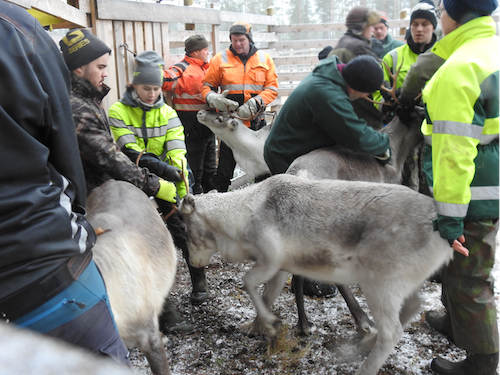
Here are some of the key findings:
Herders are very active during the annual herd roundup!
We measured TEE using two methods: the gold standard doubly labeled water technique and the flex-heart rate method. During the herd roundup, herders expended a mean of 4183 ± 949 kcal/day with female TEE ranging from 2898-3887 kcal/day and male TEE ranging from 3463-5853 kcal/day. There was no significant difference between the two methods.
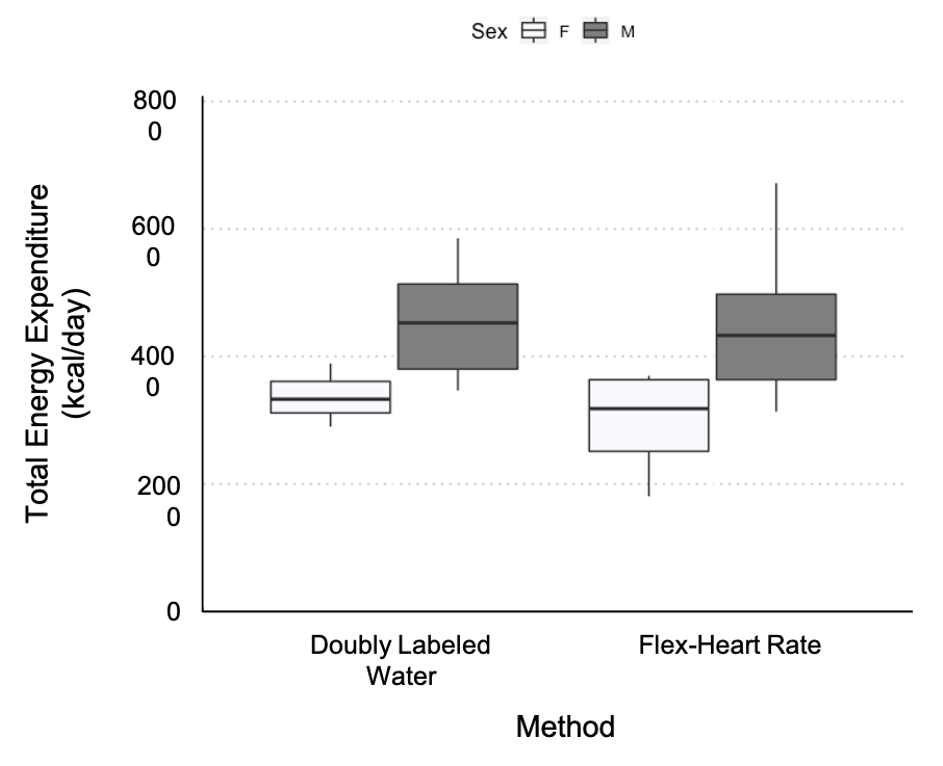
Herders eat way fewer calories than they burn during the roundup, and their diet is relatively high in fat.
Females consumed 883-2195 kcal/day and males consumed from 854-3638 kcal/day, which is well under the number of calories they were burning each day. Diet information was collected via diet diaries, and this can be a rather inaccurate estimate of calories consumed. However, even if herders underreported calories by as much as 20%, they still would have expended ~1000 kcal more than they were consuming each day during the herd roundup. The herders’ diet consisted of a greater proportion of protein and fat than is recommended by the World Health Organization (WHO).
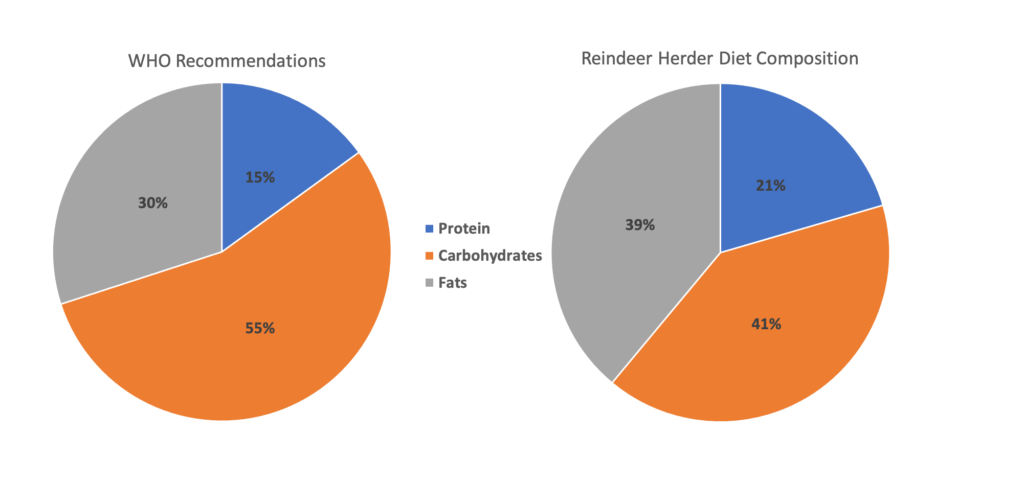
Herders expend a similar number of calories to farming economy populations like the Aymara speaking peoples and Shuar…at least during the herd roundup.
We compared the herder total energy expenditure to that of hunter-gatherers, farming economy populations, and market economy populations. Herder TEE was significantly higher than hunter gatherer and market economy populations, but very similar to that of the farming populations. However, herder TEE was much lower during the spring pilot study, though May is a particularly less busy time of the herder year.
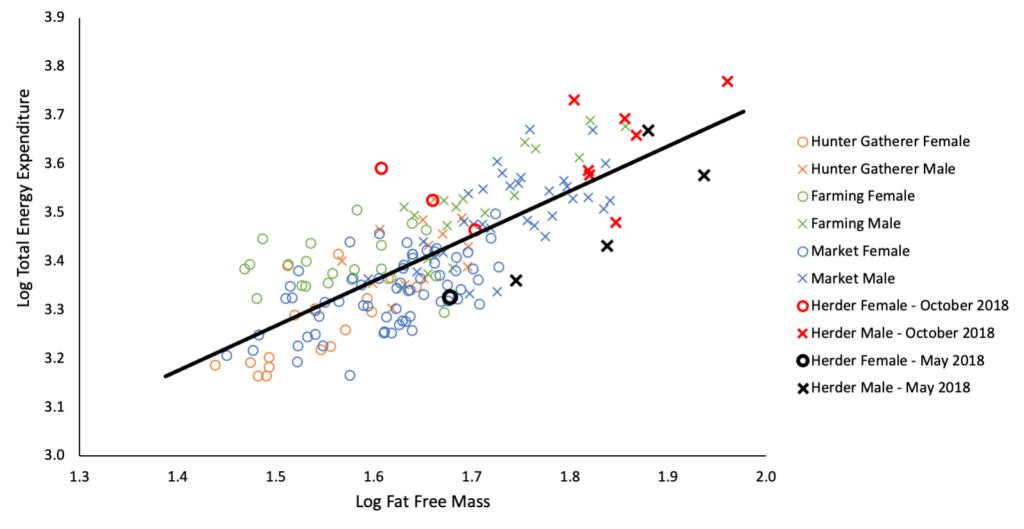
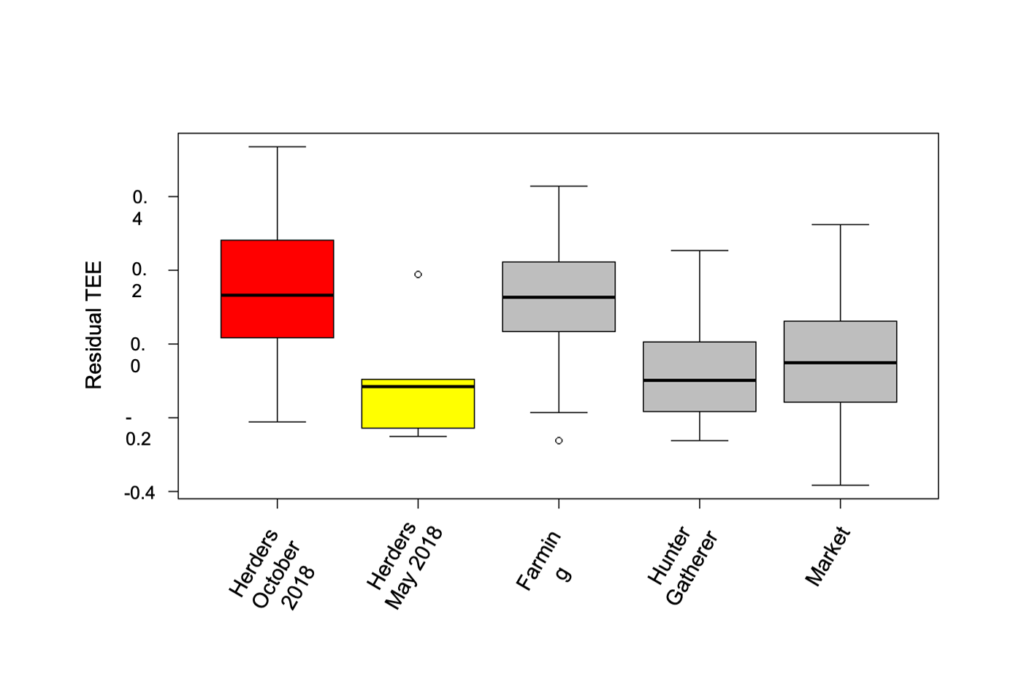
Given exposure to extreme cold in addition to high physical activity levels, one might expect herder TEE to be significantly higher than, rather than equivalent to, equatorial farming economy populations with similar activity levels but a potentially reduced thermoregulatory burden. There are several potential explanations for the similar energy expenditure among the herders and the farming economy populations, all of which highlight how local ecologies and biologies likely play an important role in shaping energy expenditure.
- Herders are very good and very experienced at mitigating cold stress – using technology, alternating tasks, and eating warming foods, for example.
- The herders’ high levels of physical activity may help reduce the cost of trying to stay warm in their cold climate.
- The farming economy populations are also known to carry a high parasitic burden (though cold climate populations have their fair share of such burdens, too, though not to the degree of equatorial populations). This high parasitic burden can raise energy expenditure in the way that the need to keep warm may raise energy expenditure among the herders.
What’s Next?
Well, we are applying for funding in hopes of expanding TEE measurements across seasons to get a better, more detailed view of energy expenditure across the herder work year. We would also like to expand the number of participants, and begin to look at the impact of climate change on reindeer herder TEE and other physiological measures.
